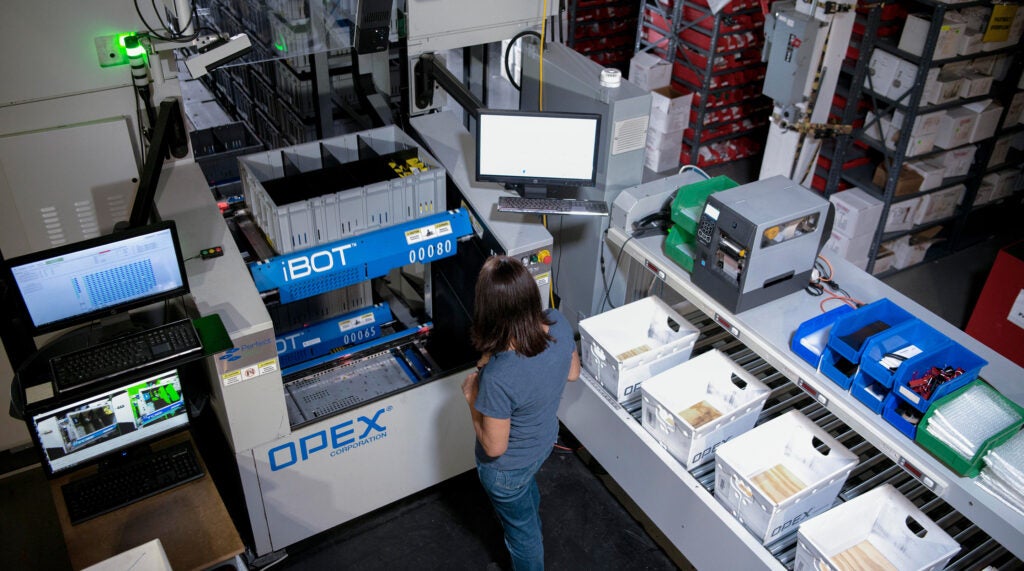60-Second Summary
Warehouse automation offers transformative benefits in efficiency, safety, and cost savings, but often faces internal resistance due to fear of the unknown and concerns about job security. This blog examines the underlying causes of resistance to automation and offers practical strategies for navigating the change successfully. By engaging employees early, communicating transparently, providing comprehensive training, implementing pilot programs, and aligning leadership around a clear vision, organizations can facilitate a smoother transition to an automated operation.
Introduction
Warehouse automation promises significant boosts in efficiency, accuracy, and safety. Yet, the journey toward an automated warehouse is often met with resistance from within, stemming from uncertainty, disruption of routines, and concerns over job security. This blog examines the causes of resistance and provides practical strategies for overcoming it, drawing on insights from performance analytics and best practices in change management.

Understanding the Roots of Resistance
Resistance to change isn’t simply about rejecting new technology, it often reflects deeper issues such as:
- Fear of the Unknown: Employees may worry about the implications of automation on their roles and responsibilities.
- Lack of Involvement: When workers aren’t part of the transition process, they can feel marginalized.
- Inadequate Communication: Unclear benefits and goals can breed skepticism.
- Cultural Inertia: Established practices and mindsets within an organization can slow the acceptance of new technologies.
Recognizing these factors allows warehouse leaders to craft strategies that address both emotional and practical concerns.
Why Warehouse Automation is Essential
- Enhanced Efficiency: Automation streamlines repetitive tasks, reducing errors and increasing throughput.
- Improved Safety: Automated systems can minimize workplace accidents by handling hazardous tasks.
- Cost Savings: Automation often leads to long-term reductions in operational costs and labor expenses.
The key to successfully adopting automation is to transition from viewing automation as a threat to recognizing it as a strategic investment in the future of warehouse operations.
Stratagies To Overcome Resistance
1. Engage Employees Early
Involve your workforce from the planning stage. Encourage an open dialogue and invite employee feedback on proposed changes. This inclusion not only demystifies the process but also builds trust.
2. Communicate Clearly and Frequently
Transparent communication is critical. Explain the benefits of automation, including the reduction of monotonous tasks and the ability for staff to focus on more strategic work. Use storytelling to share success stories and potential improvements to gain employee buy-in.
3. Provide Comprehensive Training
Involve your workforce from the planning stage. Encourage an open dialogue and invite employee feedback on proposed changes. This inclusion not only demystifies the process but also builds trust.
4. Implement Pilot Programs
Before rolling out automation fully, consider piloting it in a specific area. A pilot program allows you to showcase quick wins and learn from early challenges, building momentum for broader adoption.
5. Align Leadership and Culture
5. Align Leadership and Culture Change must be championed from the top. When leadership demonstrates commitment, it sets a powerful example. Cultivate a culture that embraces continuous improvement, where feedback is valued, and every team member feels part of the transformation journey.
Relevant Statistics
Performance analytics is a critical tool in the automation journey, offering valuable capabilities:
- Real-Time Insights: Monitor operational performance, pinpoint inefficiencies, and adjust strategies promptly.
- Measurable KPIs: Establish clear performance indicators that track progress and validate the benefits of automation.
- Continuous Improvement: Utilize data to identify trends and areas for improvement, ensuring that the automation process evolves in line with business needs.
- Enhanced Decision-Making: Analytics empowers leadership to make informed decisions that drive both operational excellence and cultural change.
Integrating performance analytics not only provides tangible evidence of progress but also helps build confidence among employees, reinforcing that the transformation is both measured and beneficial.
Best Practices for Successful Change Management
To ensure your warehouse automation initiative succeeds, consider these actionable steps:
- Develop a Clear Vision: Articulate a compelling vision for automation that aligns with the company’s long-term goals.
- Empower Change Agents: Identify and support champions within your organization who can lead by example.
- Monitor and Adapt: Regularly review performance data and be willing to pivot your strategy based on feedback and analytics.
- Celebrate Success: Recognize milestones and celebrate successes to build morale and sustain momentum.
Conclusion
The path to warehouse automation is as much about people as it is about technology. By understanding the root causes of resistance and implementing effective change management strategies, organizations can transform initial skepticism into enthusiastic adoption. The most successful automation initiatives combine clear communication, comprehensive training, and data-driven decision-making to create a workplace where technology enhances, rather than replaces, human potential.
Ready to take the next step in your warehouse automation transformation? Contact OPEX today for a personalized consultation on how our innovative solutions can address your specific needs, ensuring a seamless transition for your entire team.
Other Resources You Might Find Helpful
Georgia Department of Revenue Accelerates Processing Times by Automating the Open, Prep, and Scan Process
An Post Commerce Business Solutions Implements OPEX® Scanning Technology, Achieving a 33% Increase in
Enhancing the Digitization Process at Iron Mountain Government Solutions
GTL Implements Automation & AI to Transform the Claims Handling Process
Legastat: When Flatbed Scanning is NOT Enough
The American Samoa DOE Streamlines the Digital Records Management Process
Husch Blackwell Streamlines the Digital Archiving Process, Reducing Time Needed to Prep and Scan Documents by 50%
Paragon Boosts Efficiency with OPEX®’s One-Touch Scanning and Mail Opening Solution
Falcon® Scanner Demo
Modernizing ECM/RIM Workflows: The Hidden Costs of Inefficiencies
NEXT LEVEL AUTOMATION
Unlock Operational Efficiency with OPEX
OPEX is powering the future of automation. Contact us to learn more about how our vertically integrated automated solutions can help take your business to new heights.

